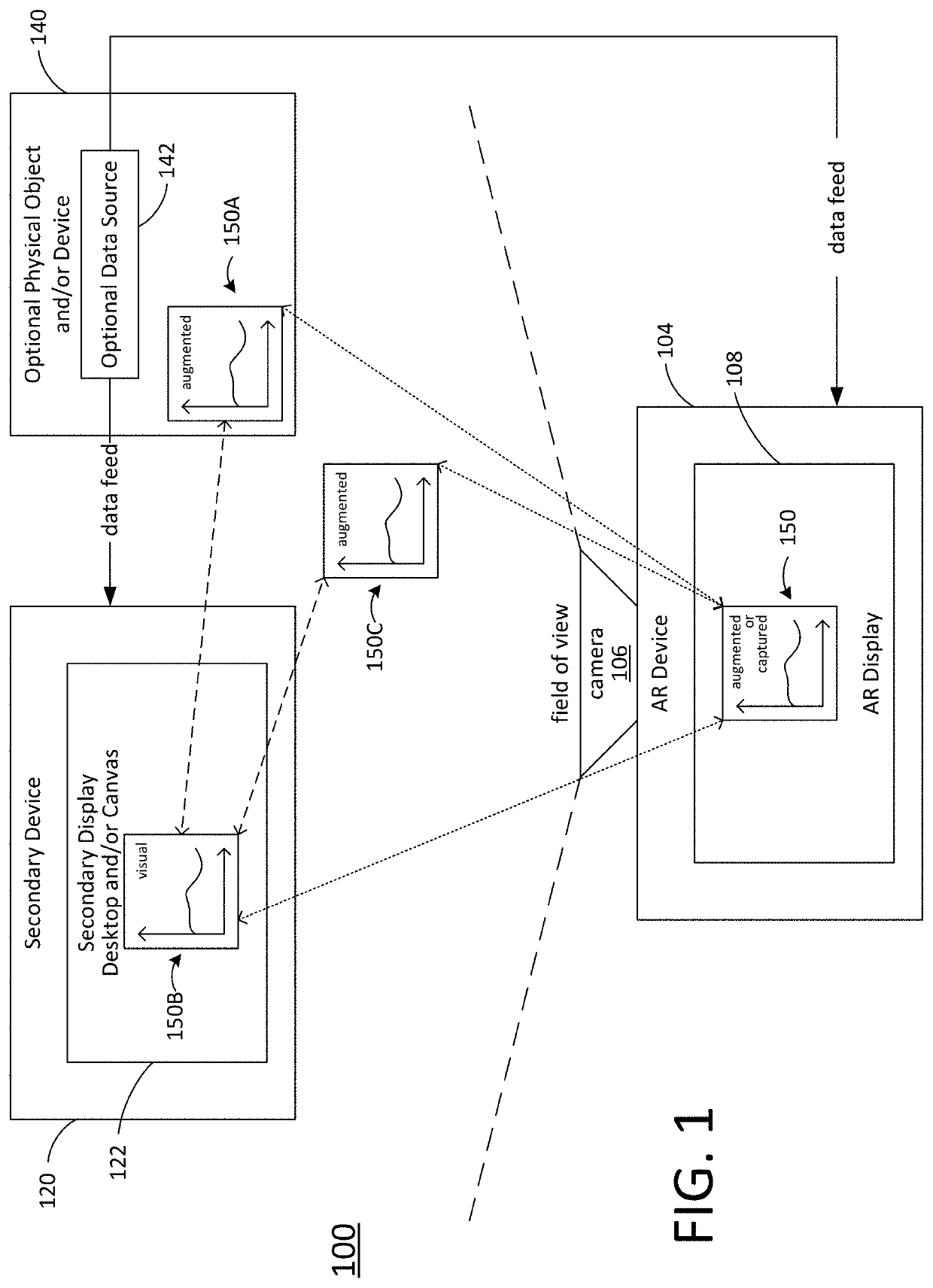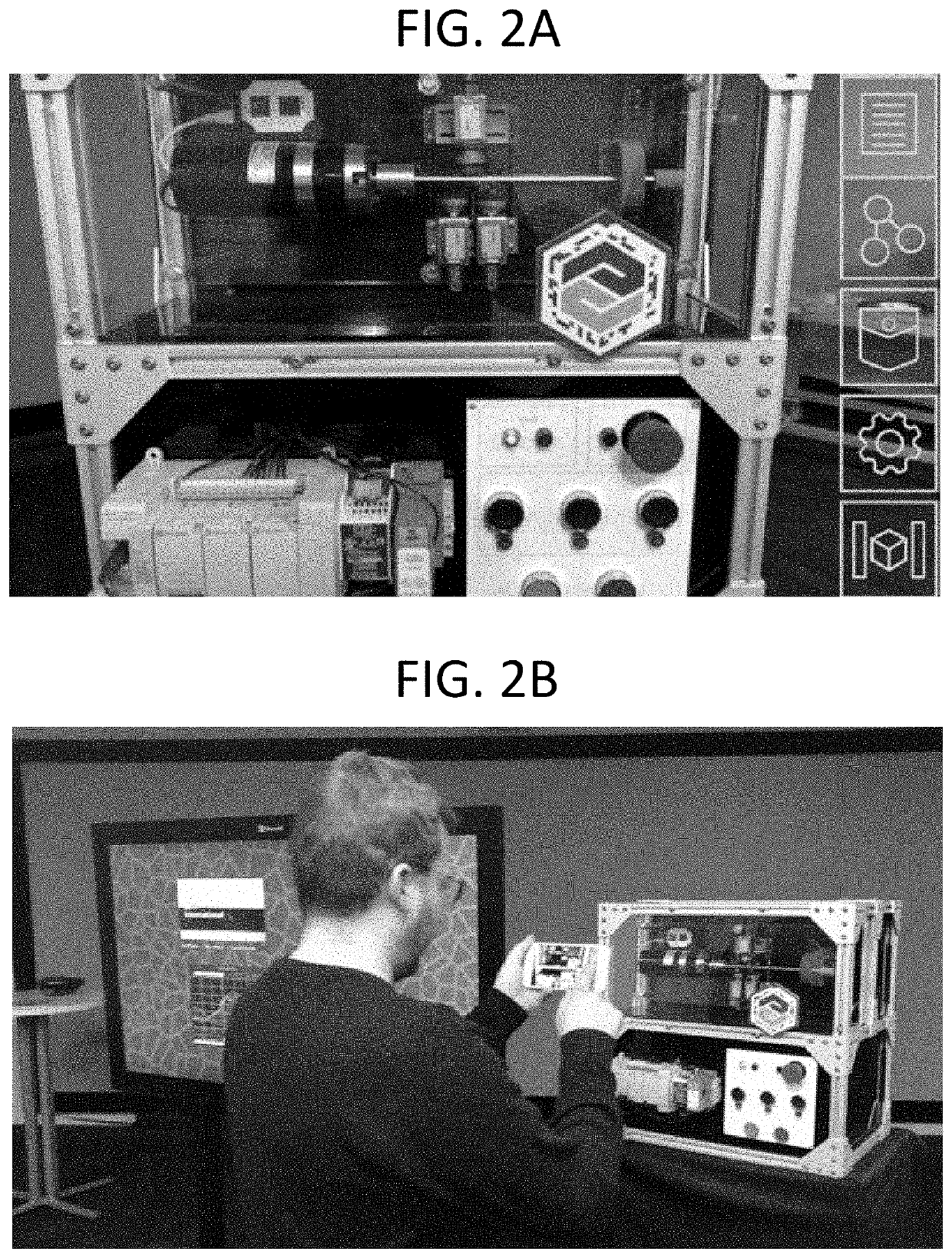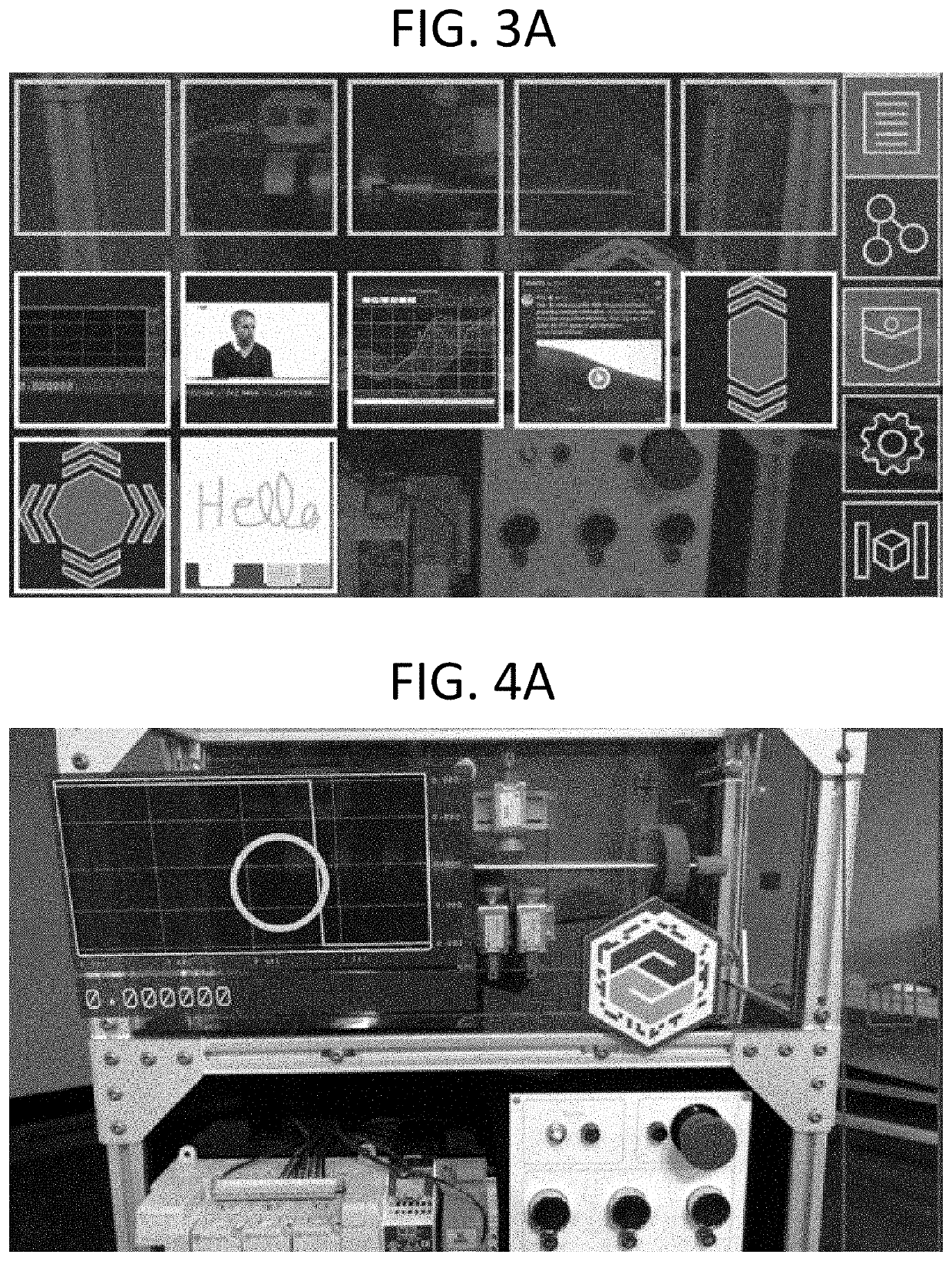Transferring Graphic Objects Between Non-Augmented Reality and Augmented Reality Media Domains
a technology augmented reality, applied in the field of transferring graphic objects between non-augmented reality and augmented reality media domains, can solve the problems of difficult operation of interconnected things (or internet of things devices) surrounding us, not well suited to interaction with things in the physical world, and the desk metaphor used in personal computers and smartphones. to achieve the effect of reducing the number of context switches and changing the way we intera
- Summary
- Abstract
- Description
- Claims
- Application Information
AI Technical Summary
Benefits of technology
Problems solved by technology
Method used
Image
Examples
Embodiment Construction
[0034]In the following description, references are made to various embodiments in accordance with which the disclosed subject matter can be practiced. Some embodiments may be described using the expressions one / an / another embodiment or the like, multiple instances of which do not necessarily refer to the same embodiment. Particular features, structures or characteristics associated with such instances can be combined in any suitable manner in various embodiments unless otherwise noted.
0. Overview and Examples
[0035]FIG. 1 illustrates a schematic overview of a system 100 for manipulating visual objects on a secondary display through an AR interface in accordance with one embodiment. An AR device 104 is outfitted with a camera 106 and a display 108. The AR device can be any device configured for operating an AR application, such as, for example, a mobile phone, tablet computer, AR headset, or mixed reality glasses.
[0036]A secondary device 120 is configured to operate or drive a seconda...
PUM
 Login to View More
Login to View More Abstract
Description
Claims
Application Information
 Login to View More
Login to View More - R&D
- Intellectual Property
- Life Sciences
- Materials
- Tech Scout
- Unparalleled Data Quality
- Higher Quality Content
- 60% Fewer Hallucinations
Browse by: Latest US Patents, China's latest patents, Technical Efficacy Thesaurus, Application Domain, Technology Topic, Popular Technical Reports.
© 2025 PatSnap. All rights reserved.Legal|Privacy policy|Modern Slavery Act Transparency Statement|Sitemap|About US| Contact US: help@patsnap.com



